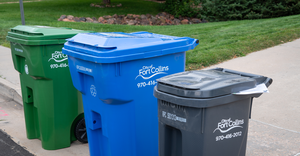Why Brands Say They Are Turning to Data Spec Management Tools
California-based Specright collects, organizes, and digitizes data housed in a single specification data management system, to be shared internally or with supply chain partners.

Consolidated, accurate product and packaging specification data can be hard to come by. The wealth of information about raw materials, formulas, and ingredients, among other specs, typically sits in multiple places along the supply chain. It’s generated by different stakeholders, often on old legacy software requiring manual input, potentially introducing errors or duplication.
Some brands and other companies are turning to digitized specification data management tools— centralized systems touted as a way to manage product information across supply chains, helping brands to comply with quality standards and regulations; to track and report on corporate ESG goals; do audits; and find pricing information.
California-based Specright is among technology developers working in this space. The company collects, organizes, and digitizes data housed in a single specification data management system, to be shared internally or with supply chain partners.
Specright’s system is integrated with its customers’ software platforms so they can extract the data they are looking for and populate it into their own software tools. Some clients are How2Recycle, which is an initiative to produce standardized labels with materials disposal instructions; Lorax who does ESG reporting; and Trayak who does lifecycle analyses (LCAs).
Sustainability is all about data because you have to know what a product or package is made from, where it’s coming from, where it’s going, and other details, says Matthew Wright, founder and CEO of Specright.
“But today, specs are scattered across spreadsheets, emails, and legacy systems, creating version control issues and risk across supply chains. By having a digital, single source of truth [data from multiple systems and placed in one location], brands can digitize their product and packaging data and easily collaborate with internal teams and vendors to manage changes, create new products, and automate quality checks,” Wright says.
How2Recycle evaluates the recyclability of packages by analyzing its members’ packaging specifications. Information gleaned through these analyses is used to create labels with standardized, simple recycling instructions for consumers.
“When it comes to assessing recyclability, we need to know everything about the package: What are the dimensions? What is the primary material used? Are there any additives, compatibilizers, or adhesives? What is the label made out of?” says Karen Hagerman, director, How2Recycle, GreenBlue.
Currently the packaging information is entered manually into a form that members fill out to request labels with recycling instructions; the form sits on How2Recycle’s member platform.
But Hagerman’s team is working with Specright to automatically integrate the data, ensuring that information that flows into the program matches what is needed to produce accurate, effective labels. The end goal is to develop an application programming interface that imports the packaging specs collected into the label request form, while negating the need to manually enter this information during the label request process, Hagerman says.
“Having more data available, and ensuring that it is accurate and harmonized, will help with recycling efforts across the industry, including producer responsibility, reporting, community program development and education, improved packaging design, and reducing unnecessary or non-recyclable packaging, providing consumers with better choices,” she says.
The demand for more sustainable products and packaging is on the rise. A recent survey from Specright found that 71 percent of consumers plan to make more sustainable purchasing decisions in 2024, and 82 percent said they are more likely to recycle products if brands provide step-by- step recycling instructions on the product or packaging.
Brands find data is key to gaining consumers’ trust and, with that notion, more of them are leveraging digitized spec platforms to push out details to the public such as materials reduction percentages and the associated impact.
“Consumers want to know that brands can back their claims. And consumer opinion [surveys] show that brands have to provide specific information. Not just that they reduced material by a given percent, but how they did it. They can show what is in a product and provide other information on product [design] alterations because of how the data structure is set up,” Wright says.
Trayak has a sustainability platform for products and packaging, which is integrated with Specright’s system. One component is LCAs.
Having up to date specifications for each SKU is critical, says Prashant Jagtap, president, Trayak.
“If current digitized specs are not available, customers struggle with locating this. While this can be a problem with one spec, it can multiply rapidly when there are thousands of SKU’s,” Jagtap says.
From his front-line position, he sees companies struggling to meet their sustainability commitments because mainstreaming sustainability companywide is difficult.
“Sustainability decisions, analytics, and reporting across the entire product and packaging portfolio can only be achieved in a scalable way by adopting the right technology. Digital specs integrated with a sustainability platform are key technologies,” Jagtap says.
As the data pool grows, Specright is looking to work with brands to get anonymized information that they can share with competitors to make collective improvements, whether around material sourcing, sustainability reporting, or other best practices.
The tech company is also just starting to explore artificial intelligence. So instead of having to look for, say a part number or place where brands and other companies can reduce cost, smart technology would do this for them, Wright says.
For the more immediate future, Specright is leveraging its current capabilities to brace for the anticipated need for more data as policies and regulations continue to evolve. Extended producer responsibility (EPR) is in the spotlight now.
“It’s a financial and regulatory reporting obligation that companies have, primarily in Europe. But EPR has been coming to the U.S. So, brands are using data for help complying with EPR laws.
“These tools have been around a while, but because policies are getting stronger, and the consumer is becoming more aware [of sustainability-related issues], there is more of a push to get the data correct,” Wright says.
About the Author
You May Also Like




